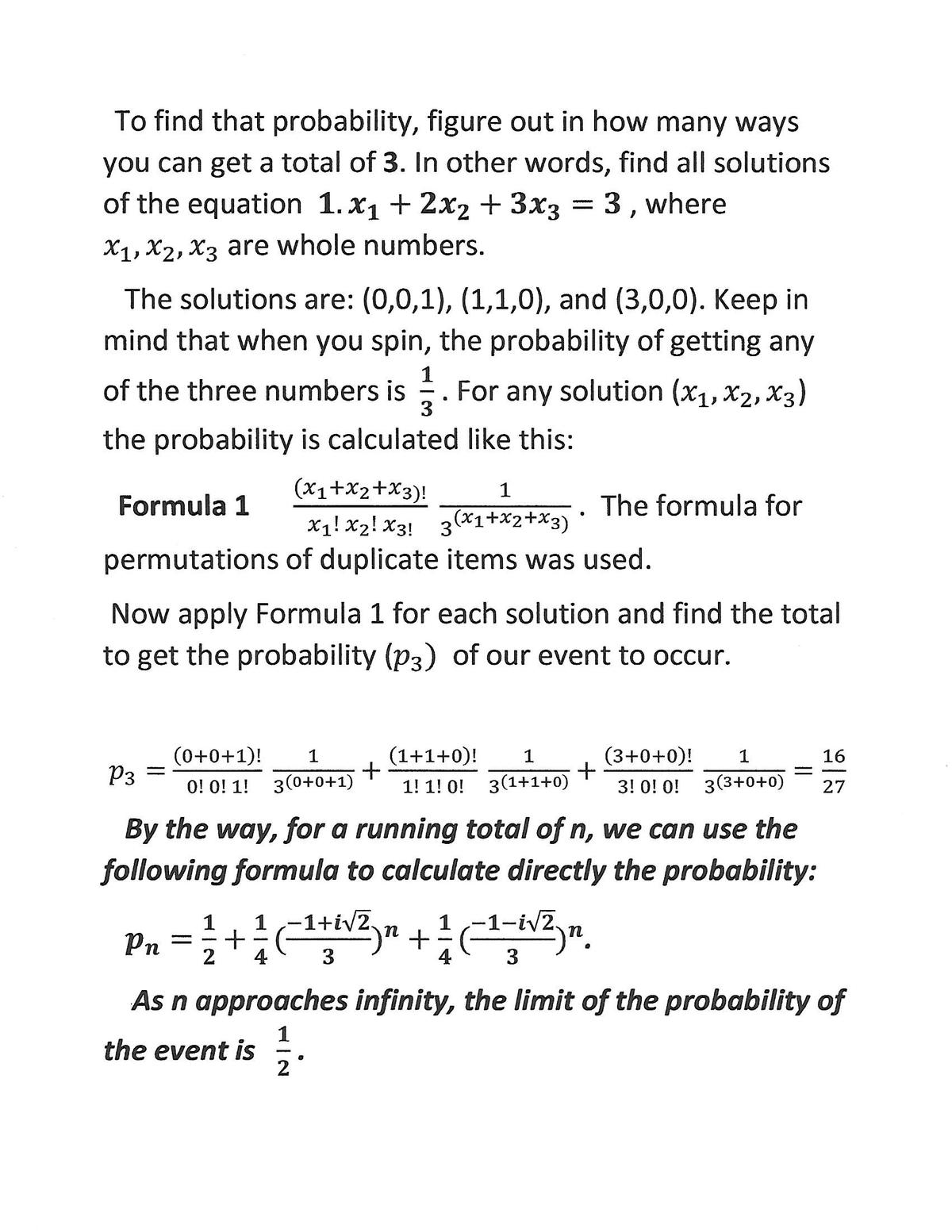A running total
A spinner is split into 3 equal regions, and numbers 1, 2 and 3 are assigned to regions one, two and three respectively. Assume that it is equally probable that the pointer will land on any one of the three regions. If the pointer lands on the borderline, spin again. You keep spinning it and keeping a running total. You start with a total of zero and keep adding the number shown on the region after every spin. Find the probability to get a total of 3.
This section requires Javascript.
You are seeing this because something didn't load right. We suggest you, (a) try
refreshing the page, (b) enabling javascript if it is disabled on your browser and,
finally, (c)
loading the
non-javascript version of this page
. We're sorry about the hassle.

There are exactly four distinct ways of getting to 3 by sequential spins: (1+1+1), (1+2), (2+1), (3).
Total probability= ( 3 1 ∗ 3 1 ∗ 3 1 ) + ( 3 1 ∗ 3 1 ) + ( 3 1 ∗ 3 1 ) + ( 3 1 )
= 2 7 1 + 9 1 + 9 1 + 3 1 = 2 7 1 6